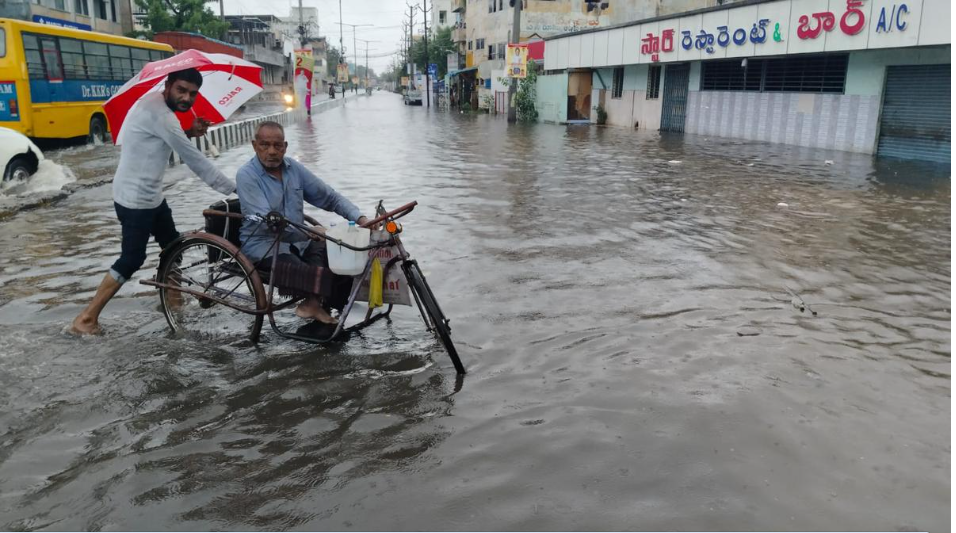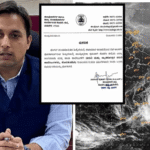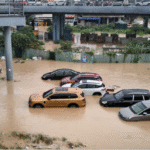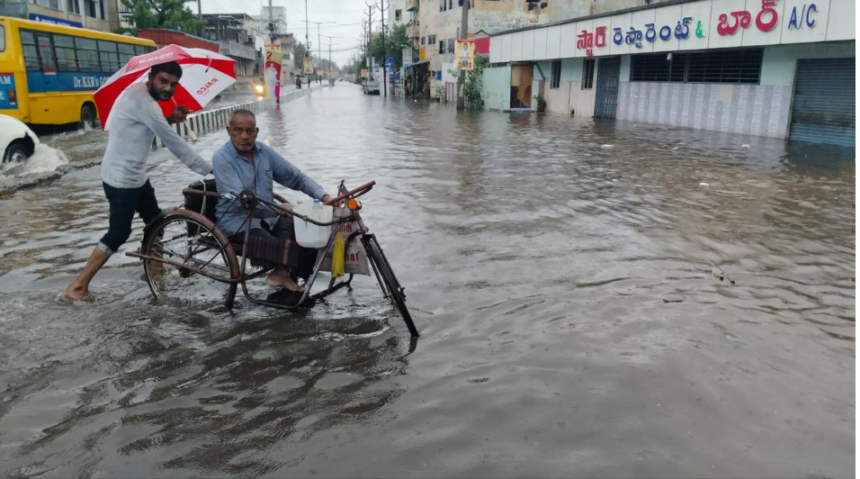Introduction
Andhra Pradesh Rains a state known for its vibrant culture and agricultural prosperity, has been grappling with severe weather conditions as heavy rains continue to lash various parts of the region. The intense rainfall has led to widespread flooding, disrupting normal life and posing significant challenges to the state’s infrastructure and public safety. In response to the escalating crisis, Chief Minister N. Chandrababu Naidu has taken proactive steps, calling for urgent measures to mitigate the situation. Among the directives issued, the use of drones in crisis management has been highlighted as a critical component of the state’s disaster response strategy.
The Onset of the Crisis
The monsoon season, typically a time of renewal for Andhra Pradesh’s agrarian landscape, has turned into a period of distress as incessant rains have caused rivers to swell and floodwaters to submerge low-lying areas. The heavy downpour has been particularly intense in districts like Guntur, Krishna, and East Godavari, where rivers such as the Krishna and Godavari have breached their banks. The flooding has disrupted transportation, damaged crops, and displaced thousands of residents, leading to a humanitarian crisis that requires immediate attention.
Andhra Pradesh Rains Chief Minister’s Response
In light of the unfolding disaster, Chief Minister N. Chandrababu Naidu has taken charge of the situation, demonstrating strong leadership and swift decision-making. Recognizing the severity of the floods, Naidu has directed all relevant departments to mobilize resources and personnel to affected areas. His call for urgent measures underscores the need for a coordinated and comprehensive response to mitigate the impact of the floods on the state’s population and infrastructure.
Deployment of Drones in Crisis Management
One of the most notable aspects of CM Naidu’s response is the deployment of drones in crisis management. Drones, or unmanned aerial vehicles (UAVs), have emerged as powerful tools in disaster management, offering a range of capabilities that are particularly useful in flood situations. In Andhra Pradesh, drones are being utilized to conduct aerial surveys of flood-affected areas, providing real-time data on the extent of the flooding, the condition of infrastructure, and the movement of floodwaters.
Advantages of Drone Technology in Flood Management
The use of drones offers several advantages in managing the current flood crisis in Andhra Pradesh:
- Real-Time Data Collection: Drones can capture high-resolution images and videos of affected areas, allowing authorities to assess the situation quickly and accurately. This real-time data is crucial for making informed decisions about resource allocation, evacuation plans, and emergency response.

- Access to Inaccessible Areas: Floodwaters can make it difficult for ground teams to reach certain areas, especially those that are heavily inundated or located in remote regions. Drones can easily fly over these areas, providing valuable information without putting human lives at risk.
- Damage Assessment: After the floodwaters recede, drones can be used to assess the extent of the damage to infrastructure such as roads, bridges, and buildings. This information is essential for planning reconstruction efforts and allocating funds for repairs.
- Search and Rescue Operations: Drones equipped with thermal imaging cameras can help locate individuals who may be trapped or stranded in flooded areas. This capability is particularly important in search and rescue operations, where time is of the essence.
Coordination and Collaboration
To ensure the effectiveness of the measures being implemented, CM Naidu has emphasized the importance of coordination among various government departments, local authorities, and disaster management agencies. The state’s disaster response teams have been put on high alert, and additional resources, including boats, helicopters, and relief supplies, have been mobilized to assist in rescue and relief operations. The Chief Minister has also urged the public to cooperate with authorities and adhere to safety guidelines to minimize the risk of injury or loss of life.
Public Health Concerns
In addition to the immediate threats posed by the flooding, there are growing concerns about public health in the aftermath of the disaster. Floodwaters can lead to the contamination of drinking water sources, increasing the risk of waterborne diseases such as cholera, dysentery, and typhoid. CM Naidu has instructed health officials to take preventive measures, including the distribution of clean drinking water, the provision of medical supplies, and the establishment of temporary medical camps in affected areas.
Impact on Agriculture
The heavy rains have had a devastating impact on agriculture, which is the backbone of Andhra Pradesh’s economy. Thousands of hectares of crops, including paddy, sugarcane, and cotton, have been submerged, leading to significant losses for farmers. The state government has initiated efforts to assess the damage and provide compensation to affected farmers. CM Naidu Andhra Pradesh Rains has also called for the implementation of long-term strategies to improve the state’s resilience to such climatic events, including the promotion of climate-resilient crops and the construction of more robust irrigation systems.
Infrastructure and Rehabilitation
The Andhra Pradesh Rains flooding has caused extensive damage to infrastructure, including roads, bridges, and public buildings. In response, the state government has prioritized the restoration of essential services and the repair of damaged infrastructure. CM Naidu has directed the public works department to carry out assessments and begin reconstruction efforts as soon as the floodwaters recede. The government is also exploring the possibility of accessing funds from the central government and international agencies to support rehabilitation efforts.
Community Engagement and Support
Recognizing Andhra Pradesh Rains the importance of community involvement in disaster response, CM Naidu has encouraged local communities to participate in relief efforts. Volunteers have been mobilized to assist in distributing relief supplies, providing shelter to displaced persons, and supporting search and rescue operations. The Chief Minister has also appealed to non-governmental organizations (NGOs) and the private sector to contribute to the relief and rehabilitation efforts, emphasizing the need for a collective response to the crisis.
Long-Term Mitigation Strategies
In Andhra Pradesh Rains addition to addressing the immediate needs of the affected population, CM Naidu has highlighted the importance of developing long-term strategies to mitigate the impact of future floods. This includes the construction of new flood control infrastructure, the improvement of early warning systems, and the promotion of sustainable land use practices. The state government is also considering the implementation of climate adaptation measures, such as the construction of climate-resilient housing and the development of flood-resistant agricultural practices.
Andhra Pradesh Rains Conclusion
The heavy rains and resulting floods in Andhra Pradesh have posed significant challenges to the state’s government and people. However, under the leadership of Chief Minister N. Chandrababu Naidu, the state has responded with urgency and innovation. The use of drones in crisis management represents a forward-thinking approach to disaster response, offering valuable insights and capabilities that can help mitigate the impact of the floods. As the state continues to navigate this crisis, the focus remains on ensuring the safety and well-being of its citizens, restoring damaged infrastructure, and building resilience for the future. Through coordinated efforts, community engagement, and the application of advanced technologies, Andhra Pradesh is working to overcome the challenges posed by this natural disaster and emerge stronger in its aftermath. ALSO READ:-WHO and Israel’s Agreement: Limited Pauses in Gaza Fighting for Polio Vaccinations 2024





